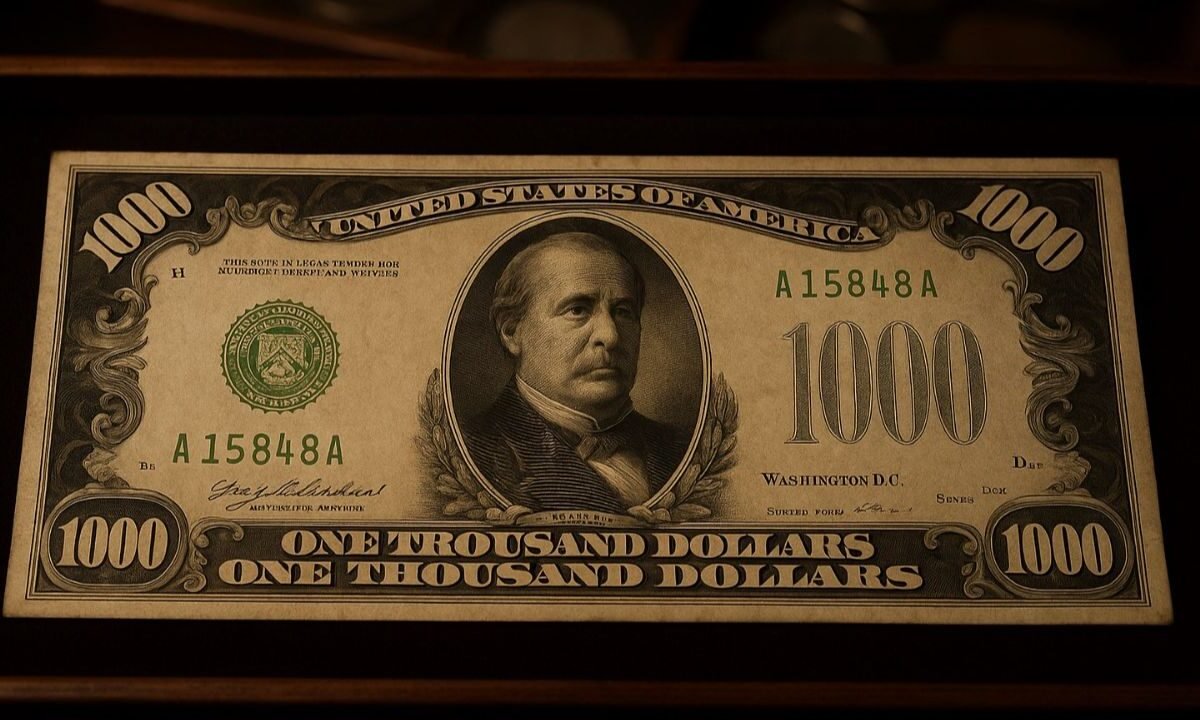The $1,000 bill is one of the most fascinating and rare denominations in U.S. currency history. Once a functional part of the economy, it is now a prized collector’s item.
This article explores the history, design, discontinuation, and collectible value of the $1,000 bill, shedding light on why it remains so coveted today.
History of the $1,000 Bill
The first $1,000 bill was issued in 1861 to support the Civil War effort, initially as an Interest Bearing Note.
These early notes helped finance government expenses and were designed with elaborate artwork.
By 1862, Legal Tender Notes were introduced, followed by Silver Certificates in 1878, Gold Certificates in 1882, and eventually Federal Reserve Notes in 1913.
A major redesign occurred in the 1928 series, featuring a portrait of Grover Cleveland, the only U.S. president to serve two non-consecutive terms.
This design continued through the 1934 series, solidifying the bill’s iconic look.
Design Features
1. Obverse
The obverse of the $1,000 bill displayed a prominent portrait of Grover Cleveland.
Surrounding the portrait were the Treasury Seal, Federal Reserve Seal, and the denomination printed in multiple locations to prevent counterfeiting.
2. Reverse
The reverse showcased intricate lathework and decorative borders.
The denomination “One Thousand Dollars” was prominently displayed, along with elaborate patterns that emphasized the bill’s high value and rarity.
Discontinuation and Legal Status
In 1969, the U.S. Treasury discontinued high-denomination bills, including the $500, $1,000, $5,000, and $10,000 notes, due to their limited use in everyday transactions.
Despite being discontinued, the $1,000 bill remains legal tender, meaning it can technically still be used for payment.
However, most bills have been withdrawn from circulation or destroyed.
Rarity and Collectibility
1. Scarcity
The $1,000 bill is rare due to years of destruction and limited circulation. Bills in uncirculated or near-mint condition are especially sought after by collectors.
2. Value
The value of a $1,000 bill depends on condition, series, and unique features.
Bills in very fine condition may be worth a few thousand dollars, while uncirculated or rare serial numbers can fetch tens of thousands.
Key Information About the $1,000 Bill
| Feature | Details |
|---|---|
| First Issued | 1861 as Interest Bearing Notes |
| Last Series | 1934 |
| Notable Portraits | Robert Morris, DeWitt Clinton, Grover Cleveland |
| Discontinued | 1969 |
| Legal Status | Still legal tender |
| Primary Use | Large interbank transactions |
| Collectible Value | $1,500 to over $200,000 depending on condition and rarity |
Fun Facts
- Radar Serial Numbers: Some $1,000 bills feature serial numbers that read the same forwards and backwards, known as radar numbers, which are highly collectible.
- Pop Culture: The $1,000 bill has appeared in films and television as a symbol of wealth and exclusivity.
- Auction Records: Rare and well-preserved bills have sold for over $200,000, especially those with unique serial numbers or errors.
The $1,000 bill is more than just currency—it is a historical artifact and a symbol of rarity and wealth.
Its limited circulation, distinctive design, and collectible status make it highly desirable among enthusiasts.
While no longer in use for everyday transactions, the $1,000 bill continues to capture the imagination of collectors and currency historians alike.
FAQs
Why was the $1,000 bill discontinued?
The $1,000 bill was discontinued in 1969 due to its limited use in daily transactions and the increasing adoption of electronic banking.
Is the $1,000 bill still legal tender?
Yes, it remains legal tender, although it is no longer in circulation and most bills are held by collectors.
What determines the value of a $1,000 bill?
Its value depends on condition, series, rarity, and unique serial numbers. Collectors often pay premium prices for bills in pristine condition or with special features.

